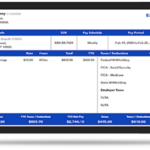Starting a business is an exciting venture, but growing that business into a sustainable and profitable entity requires careful planning, strategic execution, and a deep understanding of your market. Whether you’re starting a business online or expanding a brick-and-mortar store, growth is essential for long-term success. In this article, we’ll explore the key strategies to grow your business effectively, with a special focus on the online aspect.
1. Understanding Your Market
The foundation of any successful business is a deep understanding of the market. This involves knowing who your customers are, what they want, and how they behave. Conduct market research to gather insights into your target audience’s demographics, preferences, and pain points. Use this data to tailor your products, services, and marketing efforts to meet their needs.
-
Customer Segmentation: Divide your market into segments based on factors like age, location, purchasing behavior, and more. This allows you to create targeted marketing campaigns that resonate with specific groups.
-
Competitor Analysis: Study your competitors to identify gaps in the market that you can fill. Analyze their strengths and weaknesses to develop strategies that set your business apart.
2. Developing a Strong Online Presence
In today’s digital age, having an online presence is crucial for business growth. Whether you’re starting a business online or expanding your existing one, your website and social media platforms are your most powerful tools for reaching a broader audience.
-
Website Optimization: Your website is often the first point of contact between your business and potential customers. Ensure it is user-friendly, mobile-optimized, and fast-loading. Invest in SEO to improve your website’s visibility on search engines, making it easier for customers to find you.
-
Content Marketing: Create valuable content that addresses your audience’s needs and questions. Blogging, video marketing, and social media posts are effective ways to engage with your audience and establish your brand as an authority in your industry.
-
Social Media Engagement: Use social media platforms like Facebook, Instagram, and LinkedIn to connect with your audience. Post regularly, respond to comments, and use social media advertising to reach new customers.
3. Leveraging Technology and Automation
Technology can streamline many aspects of your business, allowing you to focus on growth. Automation tools can handle repetitive tasks, freeing up time for strategic planning.
-
CRM Systems: Customer Relationship Management (CRM) systems help you manage interactions with current and potential customers. They can automate tasks like follow-up emails, customer segmentation, and sales tracking, leading to improved customer satisfaction and increased sales.
-
Email Marketing: Automated email marketing campaigns can nurture leads and keep your customers informed about new products, promotions, and company news. Personalized emails are particularly effective in driving engagement.
-
E-commerce Platforms: If you’re starting a business online, choosing the right e-commerce platform is essential. Platforms like Shopify, WooCommerce, and BigCommerce offer features that help you manage inventory, process payments, and market your products efficiently.
4. Building a Strong Brand Identity
Your brand is more than just a logo; it’s the overall perception that customers have of your business. A strong brand identity can differentiate your business from competitors and create a loyal customer base.
-
Consistent Branding: Ensure that your branding is consistent across all platforms, including your website, social media, and physical stores. This includes using the same logo, color schemes, and tone of voice.
-
Storytelling: Share your brand’s story to connect with customers on an emotional level. Explain why you started your business, what you stand for, and how your products or services make a difference in customers’ lives.
-
Customer Experience: Delivering excellent customer service is key to building a strong brand. Make sure that every interaction with your customers, whether online or offline, is positive and reflects your brand values.
5. Expanding Your Product or Service Line
To grow your business, consider expanding your product or service offerings. This could involve introducing new products, adding complementary services, or even entering new markets.
-
Product Development: Continuously innovate by developing new products or improving existing ones. Use customer feedback and market trends to guide your product development process.
-
Service Expansion: If you offer services, consider adding new ones that complement your existing offerings. For example, a graphic design business could expand into web development.
-
Diversification: Explore new markets or demographics that you haven’t yet tapped into. This could involve expanding geographically or targeting a different customer segment.
6. Investing in Marketing and Advertising
Marketing and advertising are critical to attracting new customers and retaining existing ones. As your business grows, your marketing strategies should evolve to reach a broader audience.
-
Paid Advertising: Invest in paid advertising channels like Google Ads, Facebook Ads, and Instagram Ads to reach a wider audience. These platforms allow you to target specific demographics, interests, and behaviors.
-
Influencer Marketing: Partner with influencers who have a strong following in your niche. Influencer marketing can be particularly effective for businesses starting online, as it builds credibility and trust quickly.
-
Referral Programs: Encourage your existing customers to refer new ones by offering incentives like discounts or freebies. Referral programs leverage word-of-mouth marketing, which is highly effective in building trust.
7. Focusing on Customer Retention
Acquiring new customers is essential, but retaining existing ones is just as important for business growth. Repeat customers are more likely to make additional purchases and recommend your business to others.
-
Loyalty Programs: Implement loyalty programs that reward customers for repeat business. This could include points systems, exclusive discounts, or access to special events.
-
Personalization: Use data to personalize your interactions with customers. This could involve recommending products based on past purchases or sending personalized birthday offers.
-
Customer Feedback: Regularly seek feedback from your customers to understand their needs and improve your products or services. Showing that you value their opinions can increase customer loyalty.
8. Scaling Your Operations
As your business grows, you’ll need to scale your operations to meet increased demand. This might involve hiring more staff, upgrading your technology, or expanding your physical space.
-
Hiring and Training: As you hire new employees, ensure they are well-trained and align with your company culture. Consider outsourcing certain tasks to freelancers or agencies to maintain flexibility.
-
Inventory Management: If you sell physical products, efficient inventory management is crucial to avoid stockouts or overstocking. Use inventory management software to track stock levels and forecast demand.
-
Financial Planning: As you scale, your financial needs will change. Work with a financial advisor to plan for growth, manage cash flow, and secure funding if necessary.
9. Networking and Partnerships
Building relationships with other businesses and industry professionals can open doors to new opportunities. Networking and partnerships can lead to collaborations, referrals, and increased brand visibility.
-
Industry Events: Attend industry events, trade shows, and conferences to meet potential partners and customers. Networking at these events can lead to valuable connections and business opportunities.
-
Partnerships: Form strategic partnerships with businesses that complement yours. For example, if you sell beauty products, partnering with a skincare brand could lead to co-marketing opportunities.
-
Mentorship: Seek mentorship from experienced entrepreneurs who can provide guidance and advice as you grow your business. A mentor can help you avoid common pitfalls and accelerate your growth.
10. Continuously Improving
Finally, continuous improvement is key to sustaining business growth. Regularly evaluate your business processes, customer feedback, and market trends to identify areas for improvement.
-
Performance Metrics: Track key performance indicators (KPIs) to measure the success of your growth strategies. This could include metrics like customer acquisition cost, customer lifetime value, and return on investment.
-
Adaptability: The business landscape is constantly changing, especially for those starting a business online. Stay adaptable and be willing to pivot your strategies in response to new challenges and opportunities.
-
Innovation: Encourage a culture of innovation within your business. Regularly brainstorm new ideas, experiment with different approaches, and be open to change.
Conclusion
Growing a business is a complex and multifaceted process that requires strategic planning, continuous effort, and a willingness to adapt. Whether you’re starting a business online or expanding an existing one, the key strategies outlined in this article will help you achieve sustainable growth. By understanding your market, building a strong online presence, leveraging technology, and focusing on customer retention, you can set your business on the path to long-term success.












